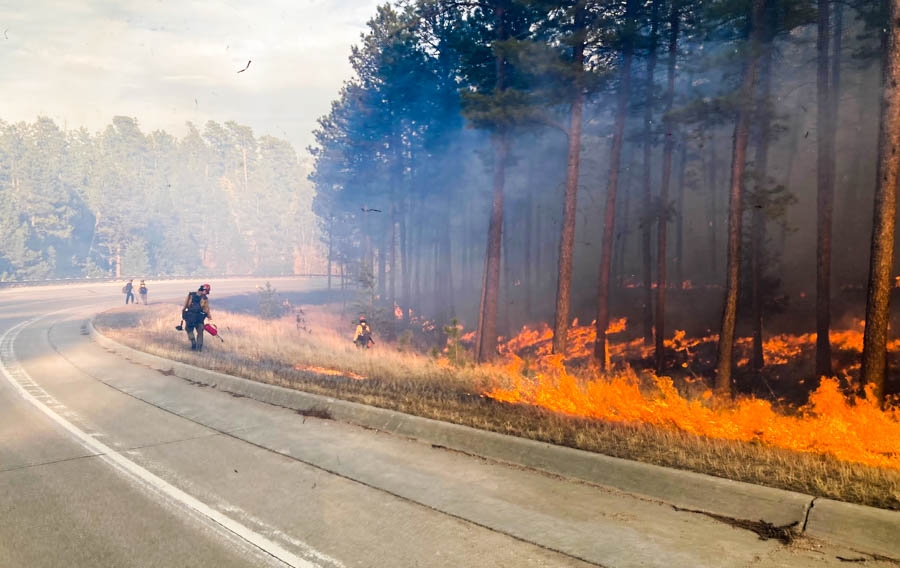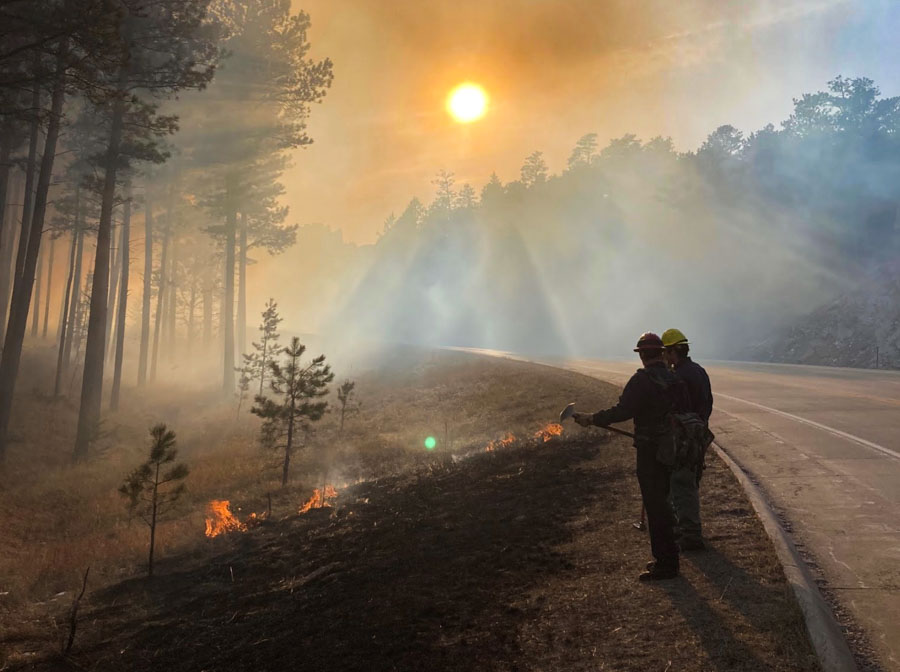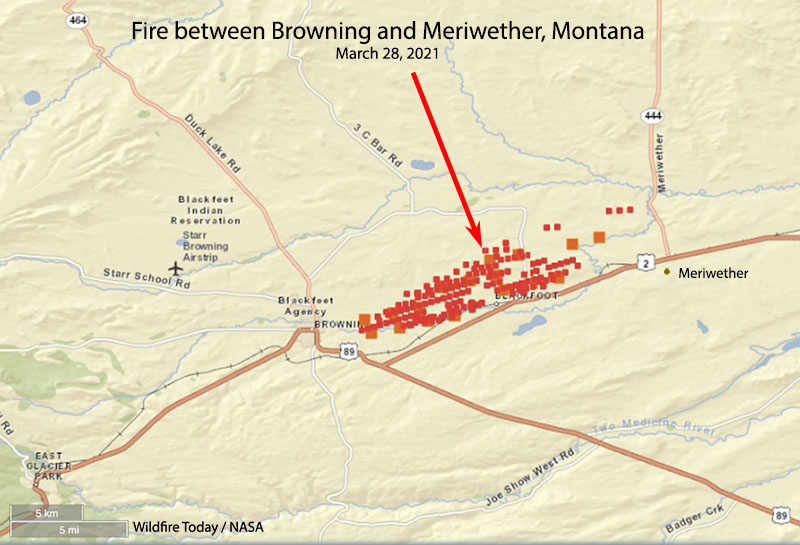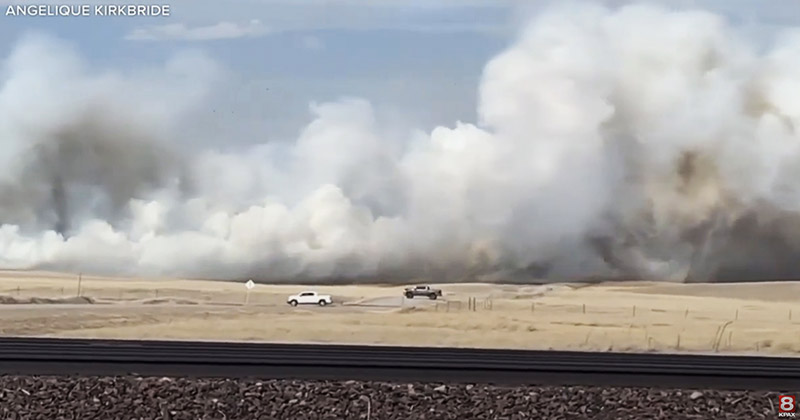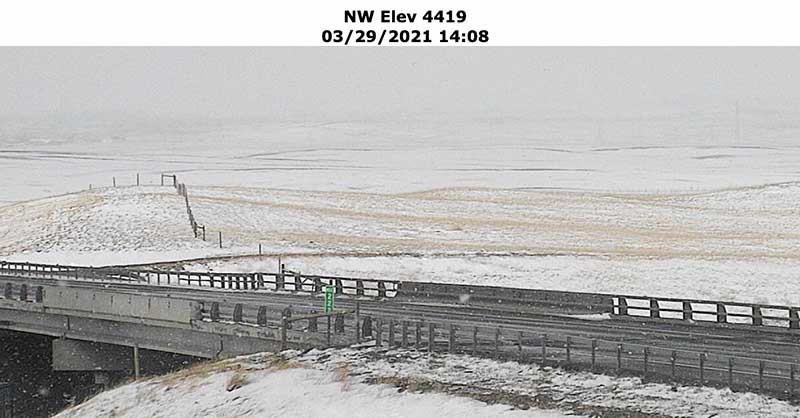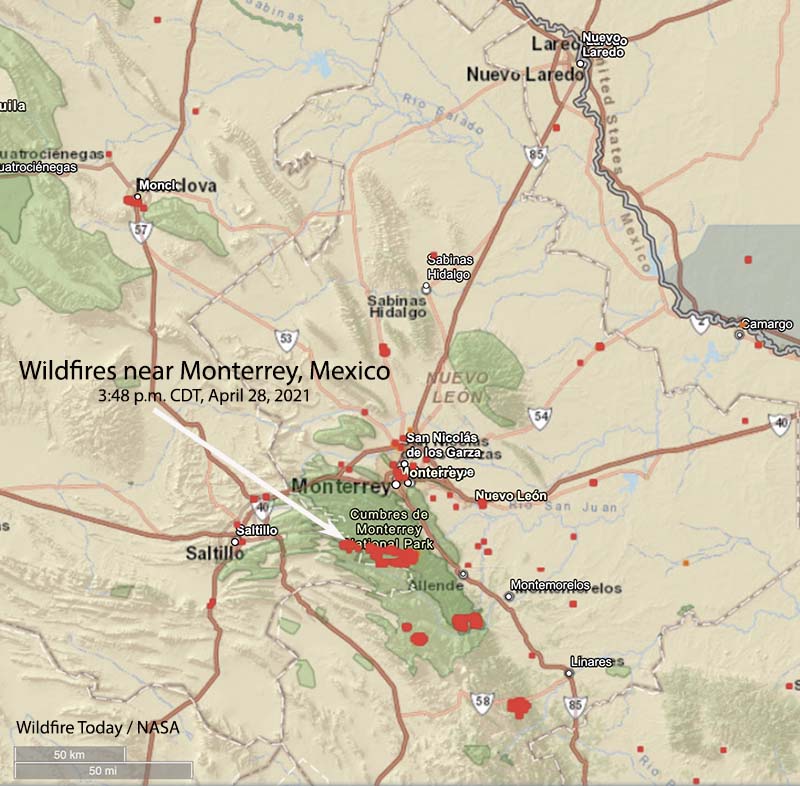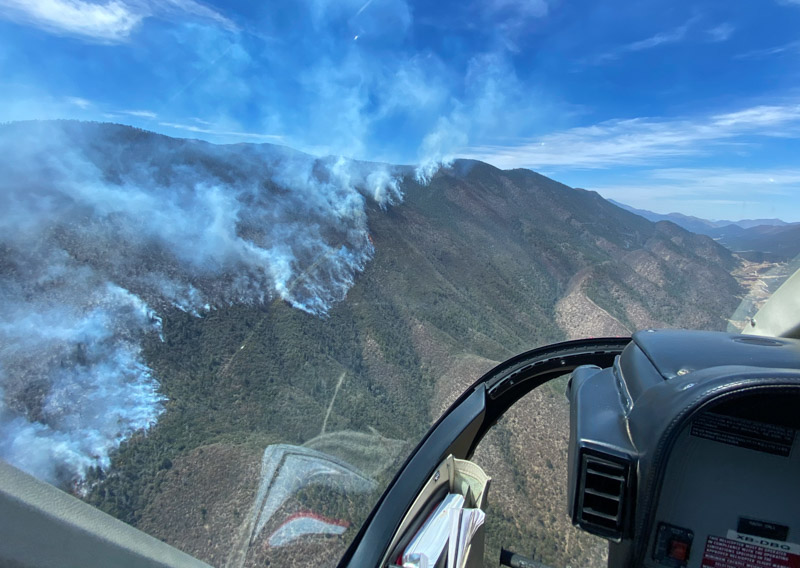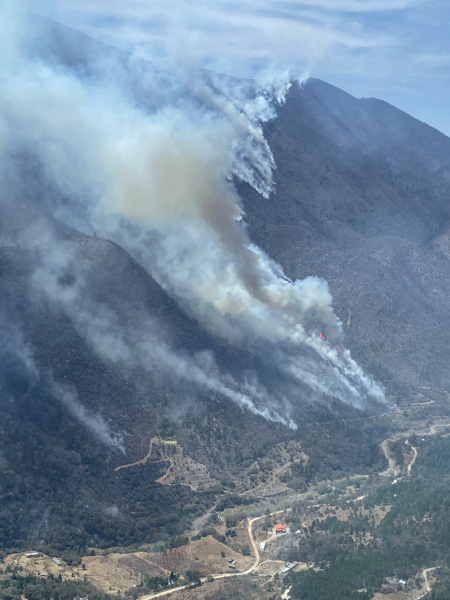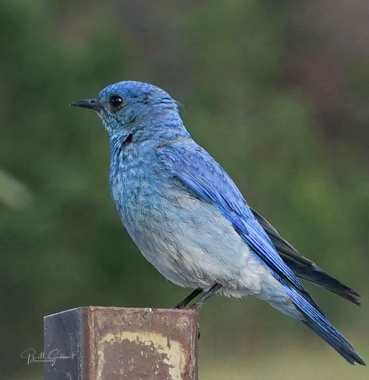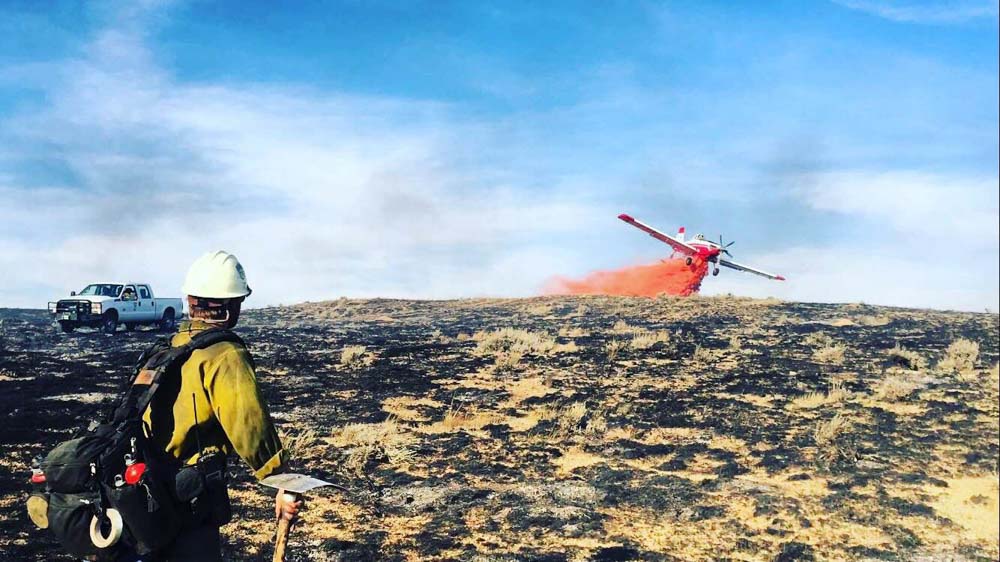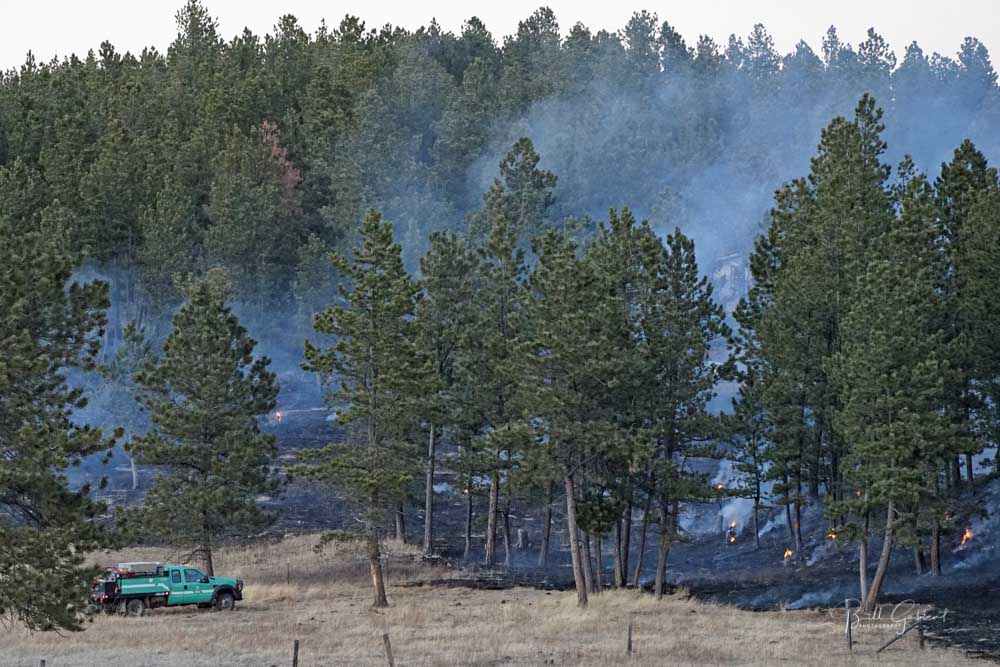Updated at 12:25 a.m. MDT March 30, 2021
In a late night update fire officials said one home and two outbuildings are confirmed to have been destroyed by the Schroeder Fire west of Rapid City, SD.
Firefighters are working during the night in the Cleghorn Canyon, Nameless Cave, and Blessed Sacrament Church areas where they are patrolling and securing structures, in addition to the rest of the fire perimeter.
Updated at 9:22 p.m. MDT March 29, 2021
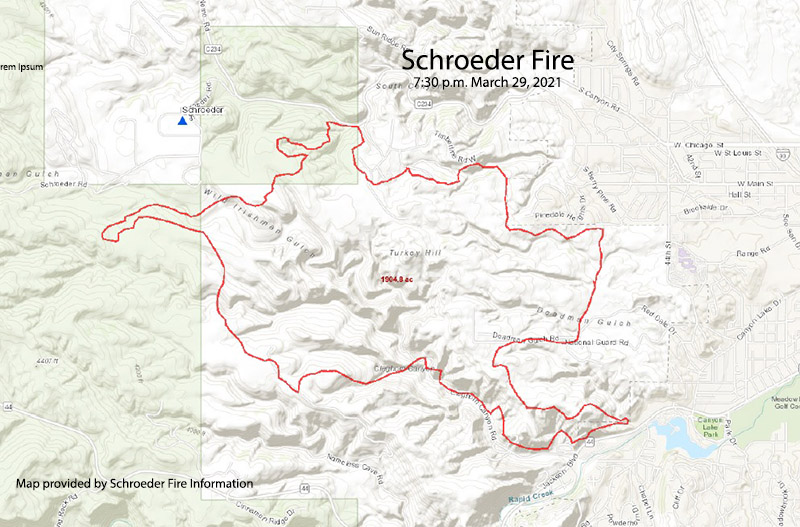
The Schroeder Fire just west of Rapid City, South Dakota was mapped at 1,905 acres at about 7:30 p.m. MDT March 29.
Fire officials said the blaze was reported Monday at 9:22 a.m. in the Schroeder Road subdivision, skipped across the canyon into the Westberry Trials subdivision and the footprint of the Westberry Trails Fire of 1988 .
A cold front with very strong winds came through around noon and pushed the fire south into the neighborhoods of Cleghorn Canyon, Nameless Cave, and Pinedale Heights.
Incident Commander Rob Powell said Monday afternoon that he was optimistic that they can keep the Schroeder Fire from crossing Highway 44.
A map showing evacuation areas is available at the Pennington County website.
The fire is human-caused and still under investigation, but that simply means it was not caused by lightning. Firefighters will staff the fire overnight. Suppression of the fire is a state responsibility, rather than federal.
“We are at record-dry conditions along with high winds playing a major factor in this fight,” said Jay Esperance, Division Director for South Dakota Wildland Fire.
Helicopters and a fixed wing air tanker have been ordered and will be used as needed when weather conditions allow. They can’t be used safely or effectively during strong winds, but a National Guard helicopter was used Monday afternoon after the wind speeds decreased. The Rapid City Air Tanker Base has been activated.
Originally published at 7:25 p.m. MDT March 29, 2021.

At least three wildfires broke out Monday in the Black Hills of South Dakota. (see the map above)
The largest is the Schroeder Fire just west of Rapid City. Heat detected by a satellite at 2:36 p.m. MDT on Monday showed it to be at least 1,000 acres and primarily between Highway 44 and South Canyon Road. Evacuations are in effect. Officials said between 400 and 500 homes have been evacuated in Rapid City and one home and two outbuildings have been destroyed. A map showing evacuation areas is available at the Pennington County website. Suppression of the fire is a state responsibility, rather than federal.
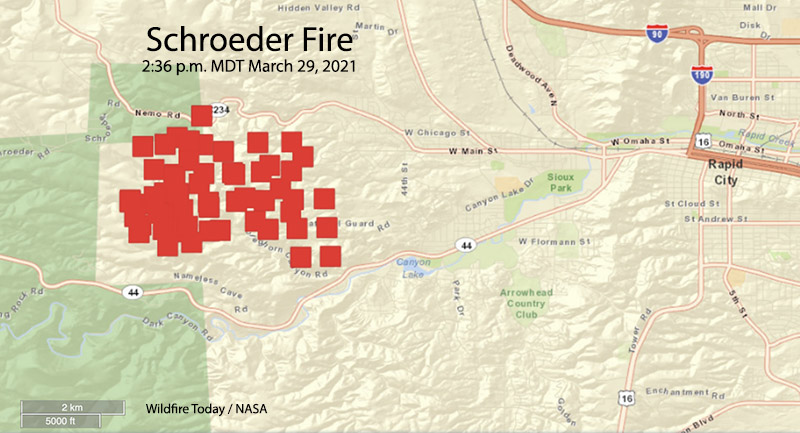
At 2:36 p.m. Monday, another fire, the 244 Fire, was less than a mile northeast of Mount Rushmore National Memorial and about a mile southwest of Keystone. It has burned 75 to 100 acres and the Memorial is closed. Suppression of the fire is a federal responsibility, rather than state.
A third blaze, the 15-acre Keystone Fire, is about 1.5 miles south of Keystone. It is being suppressed by the state.
Highway 244 is closed at the west boundary of the Memorial, and the Highway 16A entrance is closed at the Keystone and Iron Mountain Boundary.
The fires were driven by low humidity and very strong winds out of the west at 18 to 35 mph. Gusts above 50 mph were recorded at the weather station at Mount Rushmore.
We will update this article as more information becomes available.
